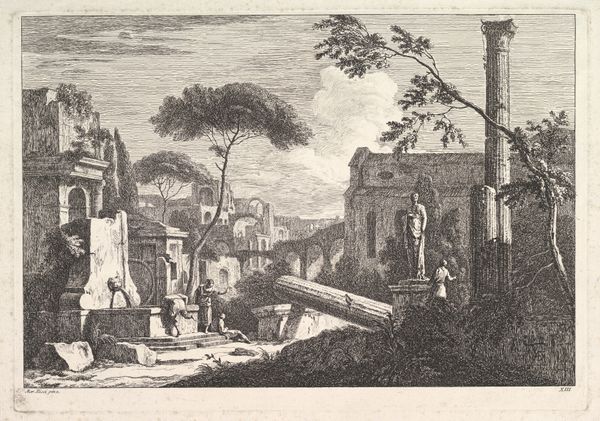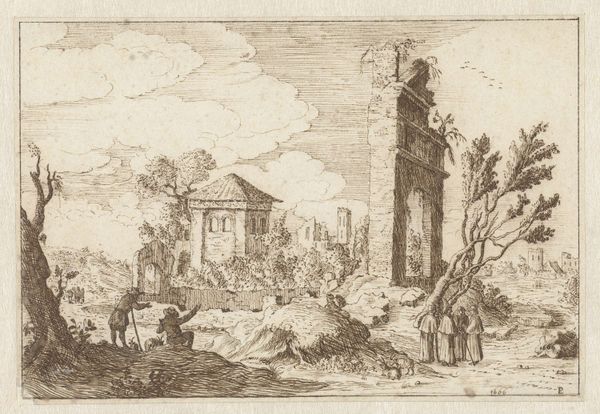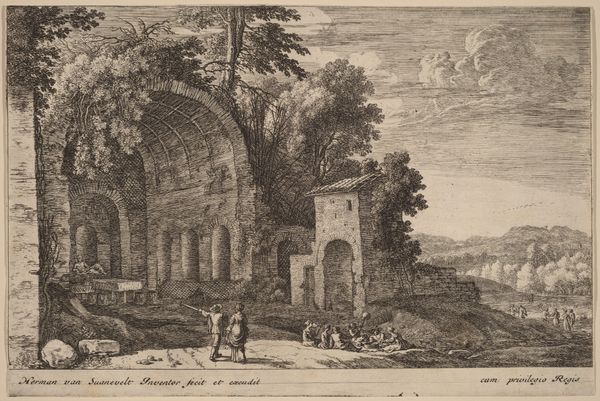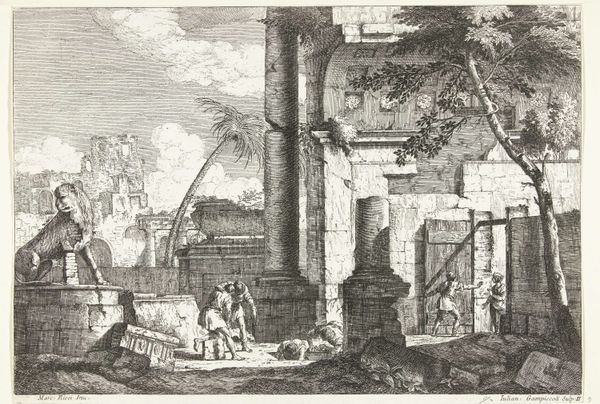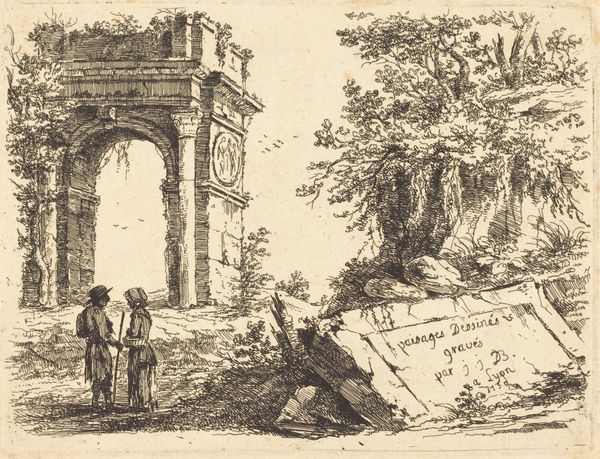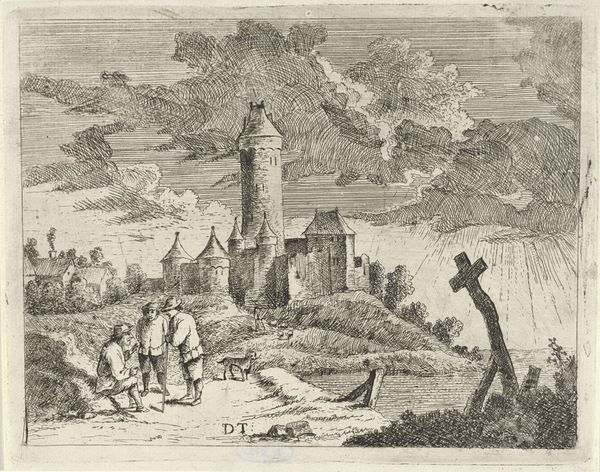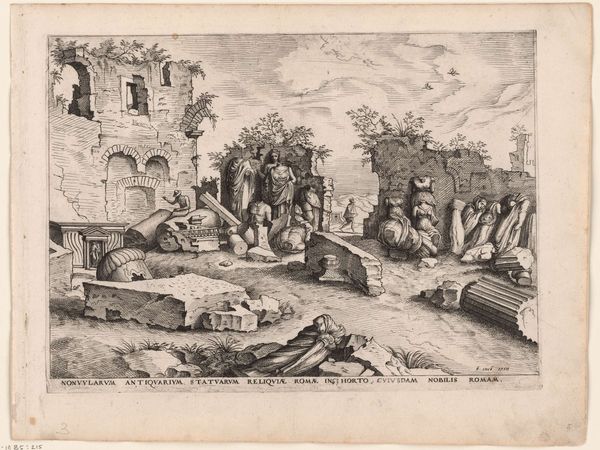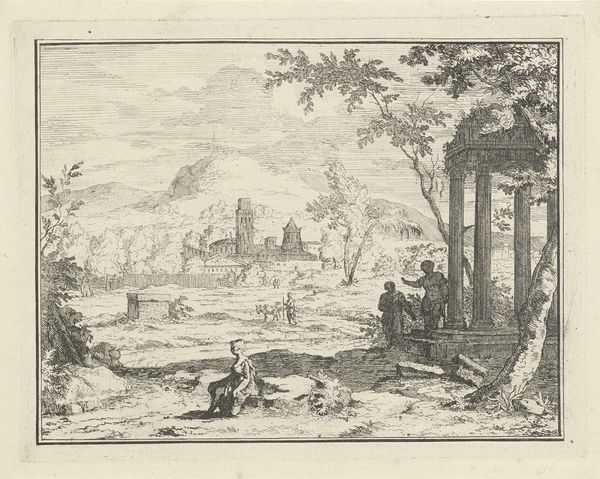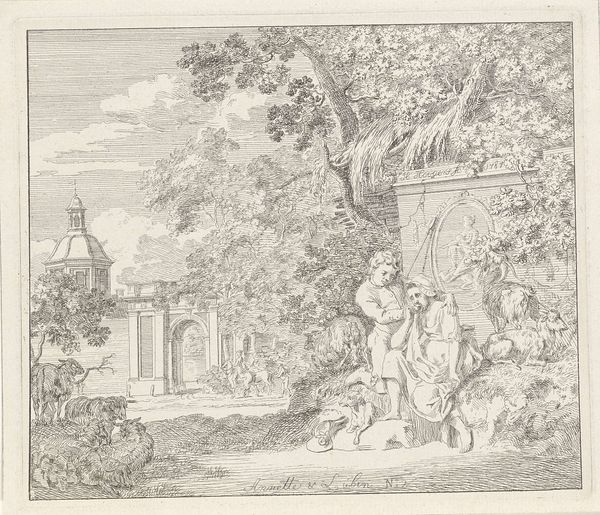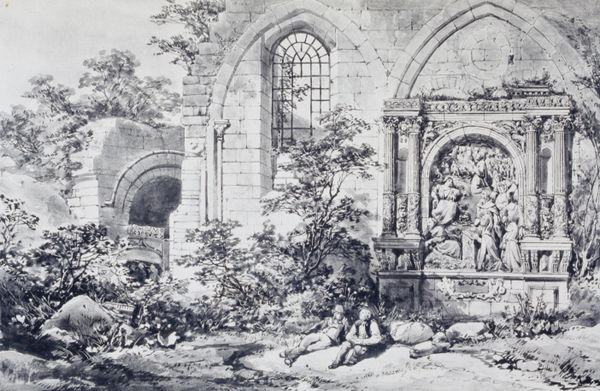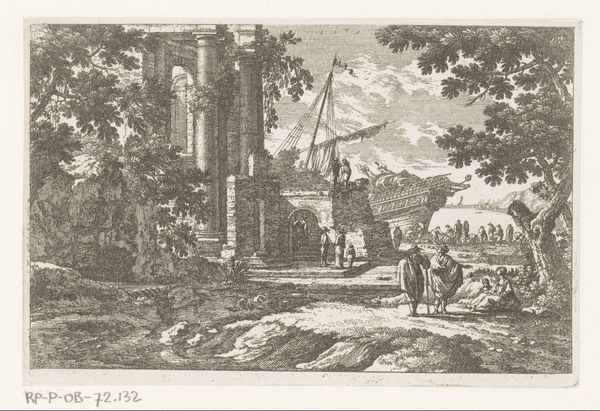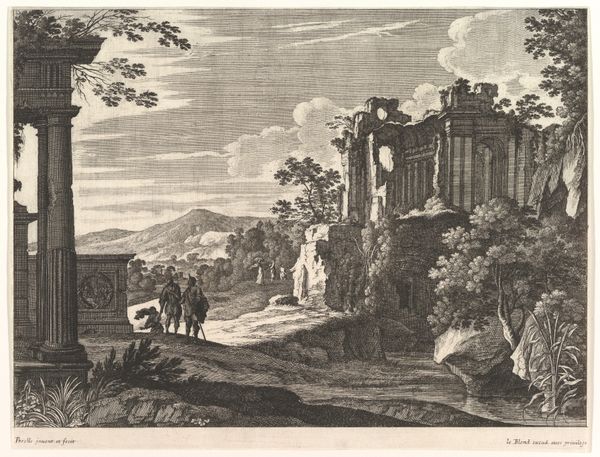
print, engraving
#
baroque
# print
#
landscape
#
classical-realism
#
figuration
#
cityscape
#
history-painting
#
engraving
#
realism
Dimensions: height 250 mm, width 360 mm
Copyright: Rijks Museum: Open Domain
Editor: This is Davide Antonio Fossati’s 1743 engraving, “Landscape with Ruins, a Statue, and a Church”. It has an undeniably melancholic atmosphere with all the broken architecture. What's your take on the visual elements at play here? Curator: The formal arrangement presents a clear dichotomy. Notice the strong contrast between light and shadow, fragmenting the composition. Observe how Fossati employs linear perspective, drawing the eye towards the distant church. Editor: Yes, the perspective almost creates two distinct spaces with the detailed foreground ruins sharply contrasted against the faded church in the background. Do you see any symbolic relevance to how Fossati structured the image? Curator: Symbolism emerges through the stark juxtapositions: the crumbling classical structures beside the towering, more complete, church. The deliberate placement and varying degrees of decay, invite semiotic inquiry into themes of transience, endurance, and the cyclical nature of civilizations. Consider how the human figures interact with these spaces. Editor: It seems the figures are physically trying to salvage these ruins, as though history is literally collapsing. The tonal rendering does evoke the grand compositions by Piranesi but there seems to be much more light and air throughout Fossati’s rendition. Curator: An interesting point. Focus on the artist’s employment of line; fine, yet assertive, in delineating the ruined textures, juxtaposed against the relatively empty sky and its parallel linear strokes. What does this suggest? Editor: It creates a visual hierarchy, guiding us to acknowledge the tactile materiality of the ruined architecture. Is this focus on detail simply representational or more of an active assessment of art as ruin? Curator: It prompts questions about our own interpretation of order and decay through aesthetics and invites an interrogation of the ruin and its art. Editor: Interesting - it really emphasizes how every element contributes to the work's formal significance. Curator: Indeed. Attending to the relationships between these parts can deepen one's aesthetic engagement.
Comments
No comments
Be the first to comment and join the conversation on the ultimate creative platform.
